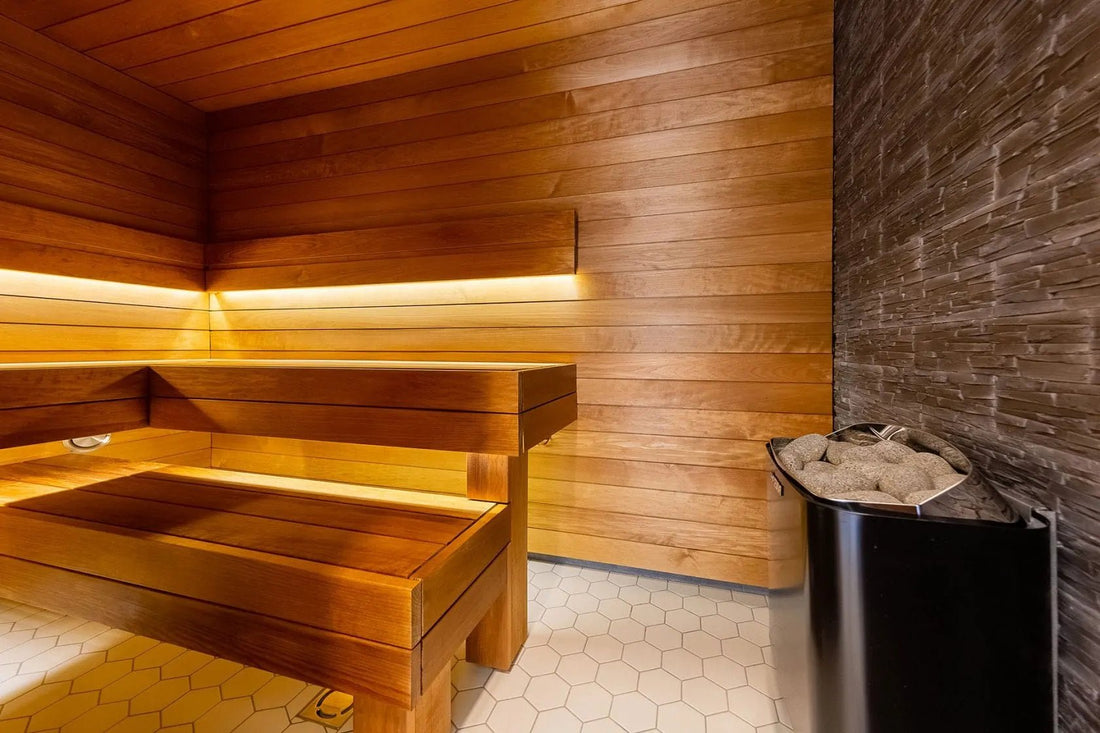When it comes to relaxation and well-being, the traditional sauna and the Turkish bath are two very popular but often confused options. Although both offer benefits through heat and perspiration, there are clear differences between the two that can make one better suit your preferences and needs. Let's explore these differences and help you decide which option is right for you.
What is a Traditional Sauna?
A traditional sauna, also known as a dry sauna, is a space where the temperature can reach between 70°C and 100°C, using heated stones to create dry heat. Generally, traditional saunas are made of wood and heated by an oven, where water can be poured over the stones to increase the humidity momentarily, but the main focus is on dry heat.

The traditional sauna has many benefits : it promotes intense perspiration, helping to eliminate toxins and providing a feeling of relaxation and detoxification. Exposure to this type of heat is also known to improve blood circulation and relieve muscle pain.
What is a Turkish Bath?
On the other hand, the Turkish bath, also known as a hammam, is a moist heat environment. The temperature is lower compared to the traditional sauna, ranging between 40°C and 50°C, but the humidity is extremely high, often reaching 100%. Unlike the dry sauna, the Turkish bath involves marble rooms heated by steam, providing a gentle and relaxing steam bath experience.

The humid environment of the Turkish bath is ideal for improving breathing, helping to clear the airways, and has benefits for the skin, as the steam opens the pores and promotes deep cleansing of the skin.
Main differences:
-
Temperature and humidity: The main difference between the traditional sauna and the Turkish bath is the combination of temperature and humidity. While the traditional sauna offers dry heat and higher temperatures, the Turkish bath offers moist heat with more moderate temperatures.
-
Health benefits: Both options provide relaxation and improve circulation, but the Turkish bath is often preferred by people with respiratory problems due to the humid environment. The traditional sauna, on the other hand, is ideal for those looking for intense detoxification through perspiration.
-
Environment: Traditional saunas are often made of wood, while Turkish baths have a more luxurious aesthetic, with marble and steam environments.
How to Choose the Best Option for You?
If you prefer an experience of dry heat and intense perspiration, the traditional sauna is ideal. However, if you like a more humid environment, the gentle sensation of steam and the benefits for your skin, the Turkish bath may be the best choice.
Undecided?
If you're undecided between a sauna and a Turkish bath, discover the Saunamo Duala choice that offers the best of both worlds. Combining the benefits of a traditional sauna and a Turkish bath, this option allows you to enjoy both experiences in the comfort of your own home.

Now that you know the main differences between a traditional sauna and a Turkish bath, you can choose the option that best suits your lifestyle and well-being needs. Want to know more or have any questions about adding a sauna or steam room to your home? Contact us and we'll help you find the best solution for you.


